Purpose
The purpose of this trial was to evaluate the effect of four different cover crop treatments – planted on unseeded acres in the summer of 2019 – on the following winter wheat crop.
Tyler McBlain, a Brant County cash crop farmer and Brant Soil and Crop Improvement Association Director, seeded four strips of different cover crops (1. oats & forage peas, 2. buckwheat, oats & forage peas, 3. forage peas, and 4. soybeans) on a Haldimand Silty Clay field that he was unable to grow a crop on in 2019 due to wet spring conditions (Figure 1 and 2). McBlain allowed the cover crops to grow for 8 weeks. He terminated the cover crops by herbicide two weeks prior to seeding winter wheat.
Given that unseeded acres can occur due to excessively wet spring conditions from time to time in this part of the province, and cover crops can be a useful tool in summer to compete with weeds, improve soil quality and cycle nutrients, this situation was deemed a valuable case study.
Figure 1. Overhead view of cover crop treatments in summer of 2019. White strip s treatment 2 (buckwheat, oats & forage peas). Photo: Tyler McBlain.
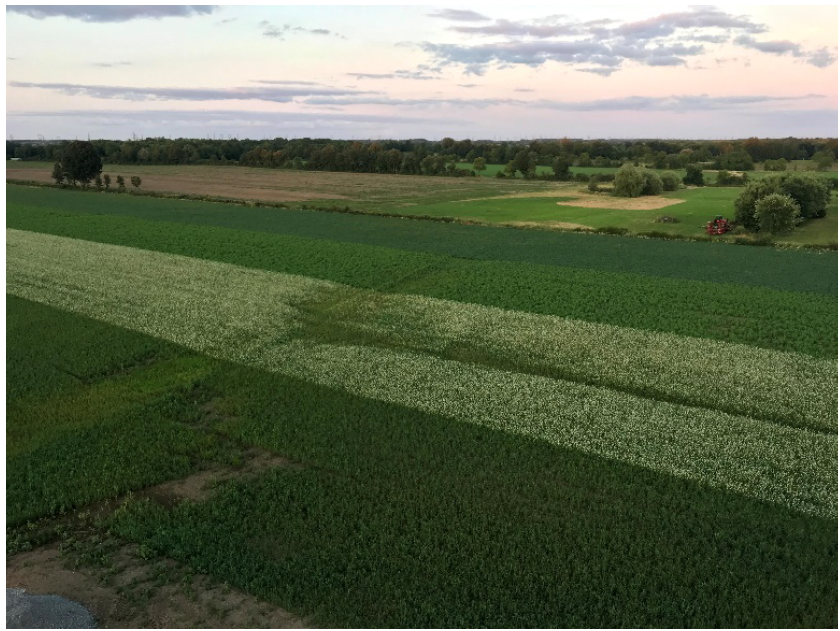
Methods
Single strips of four different cover crops were planted by air seeder on July 12th (except soybeans, seeded July 2nd; Table 1 and Figure 2). They were terminated by herbicide on September 6th, 2019 (buckwheat harvested in treatment 2 on September 19th). Winter wheat was seeded on September 21st, 2019 at 7.5-inch spacing and 1.6 million seeds/acre (Figures 3 & 4). It received 75 lbs/acre of monoammonium phosphate (MAP) with the seed at planting, as well as 130 lbs/acre of nitrogen and 10 lbs/acre of sulfur in the spring of 2020.
Table 1. Cover crop species and seeding rates
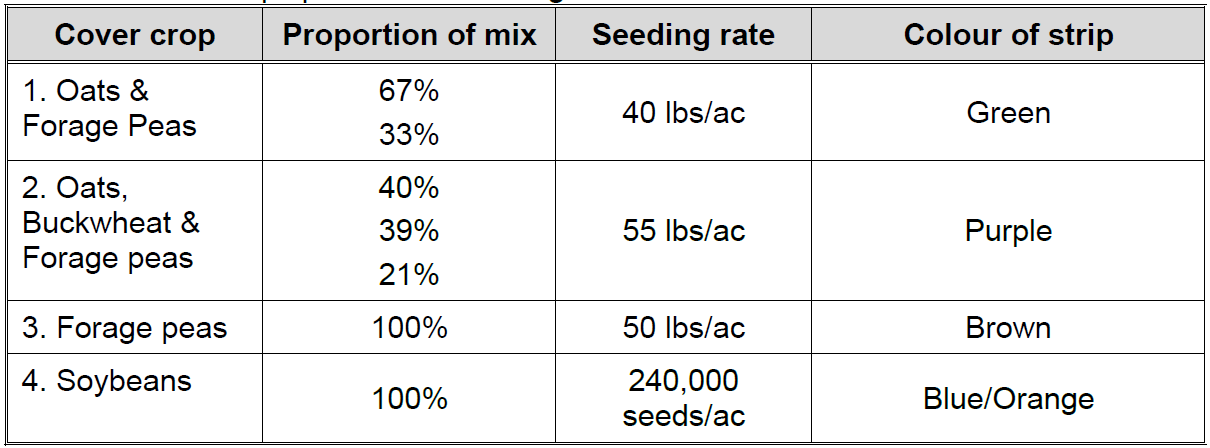
Figure 2. Overhead view of four different cover crop strips (note: orange and blue strips both represent soybeans)
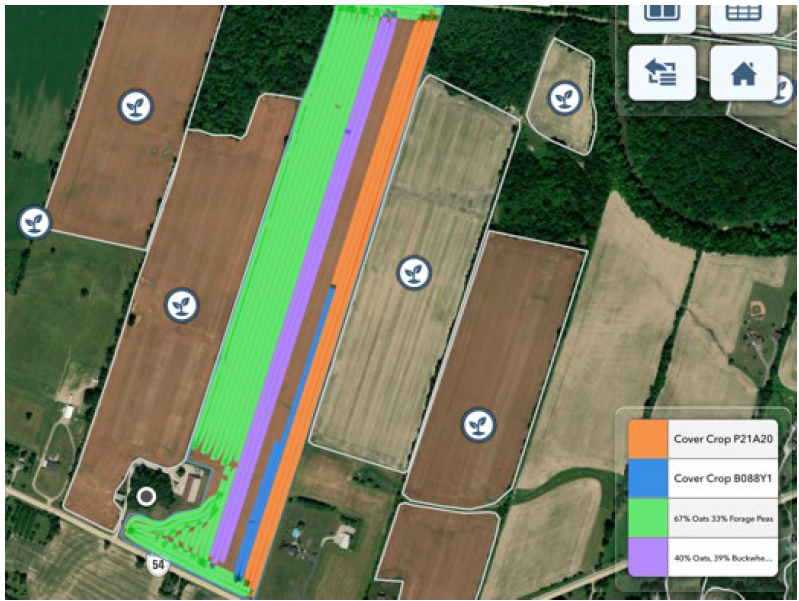
Figure 3. Winter wheat being no-till seeded into cover crop residue on Sept. 21st, 2019. Photo: Tyler McBlain.
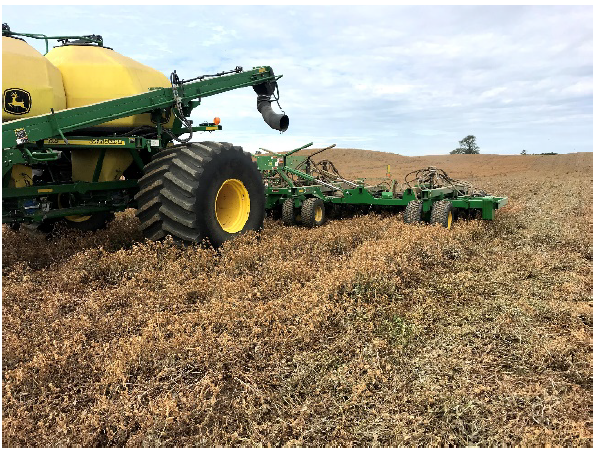
Figure 4. Winter wheat approximately five weeks after seeding. Photo: Tyler McBlain.
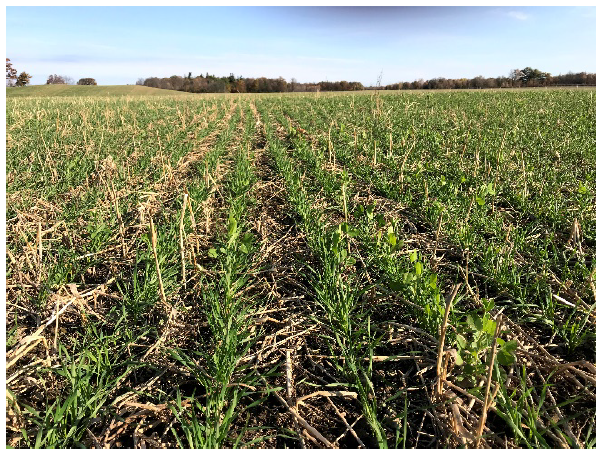
On April 1st, 2020, plant and tiller counts were performed in five locations along each strip. Tissue samples were also taken on this date from all aboveground winter wheat growth and submitted to an OMAFRA accredited laboratory for nutrient analysis.
Yield data were collected using a calibrated yield monitor from approximately 3,000 feet of length from each strip.
Basic statistical analyses were performed to determine statistically significant differences amongst treatments where applicable.
Results
Stand Counts
The plant stand was greater than 850,000 plants per acre in all treatments (Table 2). Although there was some variability, there was no statistical difference in stand amongst treatments. Treatment 4, which had the highest stand count, had the lowest number of tillers/square foot, while treatments 2 and 3 had the most tillers.
Tissue nutrient content
Macro and micronutrient values (Figures 5 & 6) did not differ statistically amongst cover crop treatments. Given the lack of replication, differences were unlikely to be detected. It was also unlikely that an 8-week period of cover crop growth would impact soil nutrient availability to a degree such that it would show up in the following winter wheat crop.
Table 2. Plants per acre and tillers per plant by cover crop treatment as of April 1st, 2020. Average values are presented for each treatment based on counts performed in five separate locations.
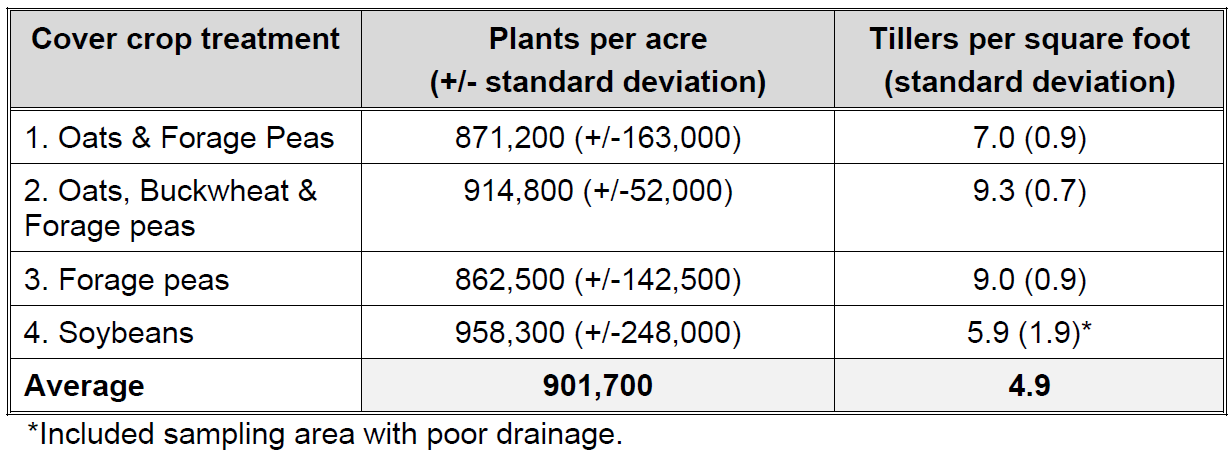
Figure 5. Mean macronutrient content for three of four cover crop treatments as of April 1st, 2020 (average of five values). Error bars represent standard deviation.
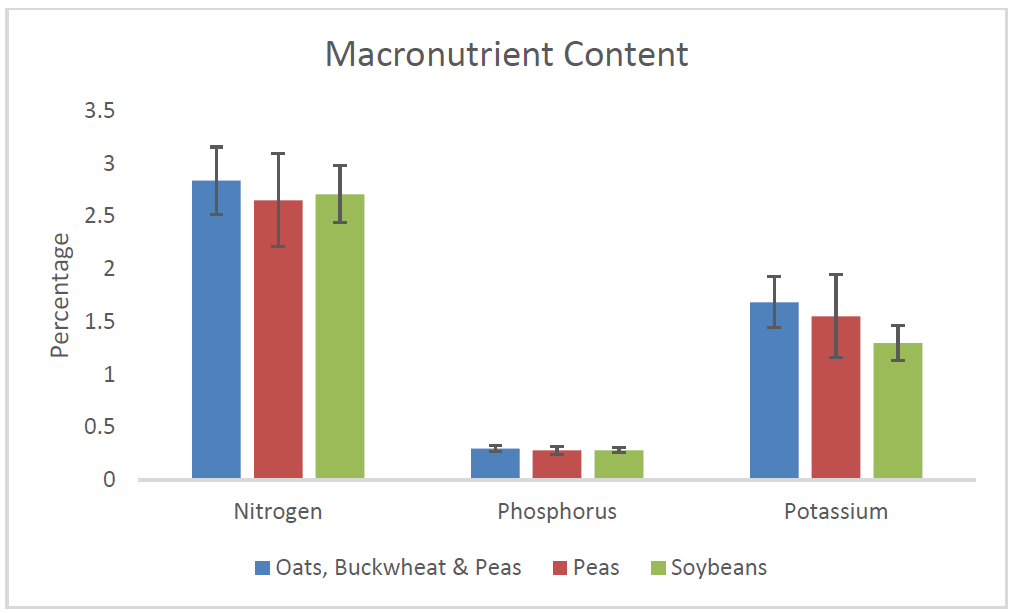
Figure 6. Mean micronutrient content for three of four cover crop treatments as of April 1st, 2020 (average of five values). Error bars represent standard deviation.
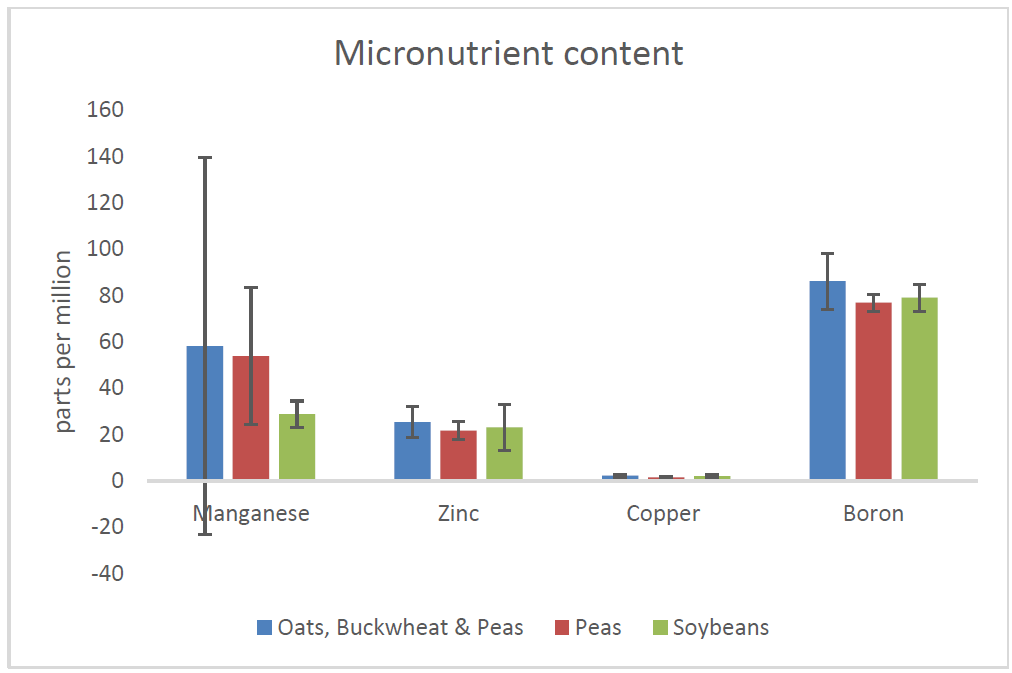
Winter wheat yield
With respect to crop yield, there did not appear to be any meaningful difference amongst the treatments. Although treatment 1 was approximately 3 bushels/acre less than treatment 3, given that there was only one replicate of each, it is not possible to say whether the difference was due to the preceding cover crop or other factors.
Table 3. Winter wheat yield and moisture.
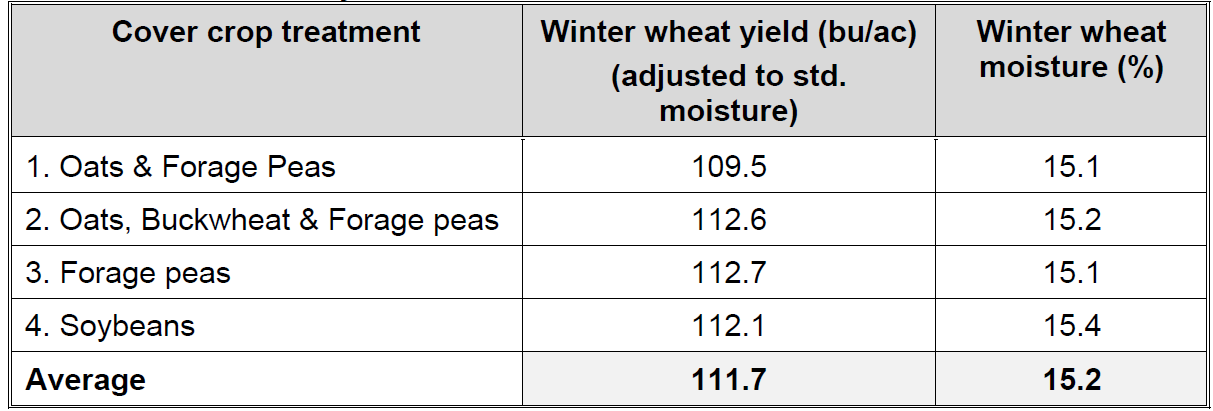
Summary
This case study demonstrated that it is possible to grow a variety of different species as summer cover crops in an unseeded acres situation, followed by a successful winter wheat crop. While there were no differences in plant stand, tissue nutrient content or yield in this trial, the treatment that included harvested buckwheat provided an opportunity for modest income in a short window of time.
As was done in this case study, terminating the cover crop at least two weeks in advance of winter wheat seeding is a best practice. Keeping the cover crop from becoming too growthy can help ensure manageable residue conditions at wheat seeding.
Overall, this case study has shown that growing a cover crop in an unseeded acre situation can provide an opportunity to increase competition with weeds and improve soil quality, while still allowing for timely and successful seeding of a winter wheat crop. Future trials should evaluate additional warm-season cover crops and their ability to provide agronomic and soil benefits in the event that spring weather prevents the seeding of normal cash crops.
Acknowledgements
This project was conducted by Brant SCIA with OSCIA Tier One funding. Thank you to Joanna Follings, OMAFRA Cereals Specialist, and Holly Loucas, Customer Agronomist with Corteva, for assistance with field work. Thank you to Tyler McBlain for setting up the trial and providing an excellent learning opportunity.
Project Contacts:
For more information, contact Jake Munroe, Soil Management Specialist (Field Crops), OMAFRA at: jake.munroe@ontario.ca or 519 301 0548.
